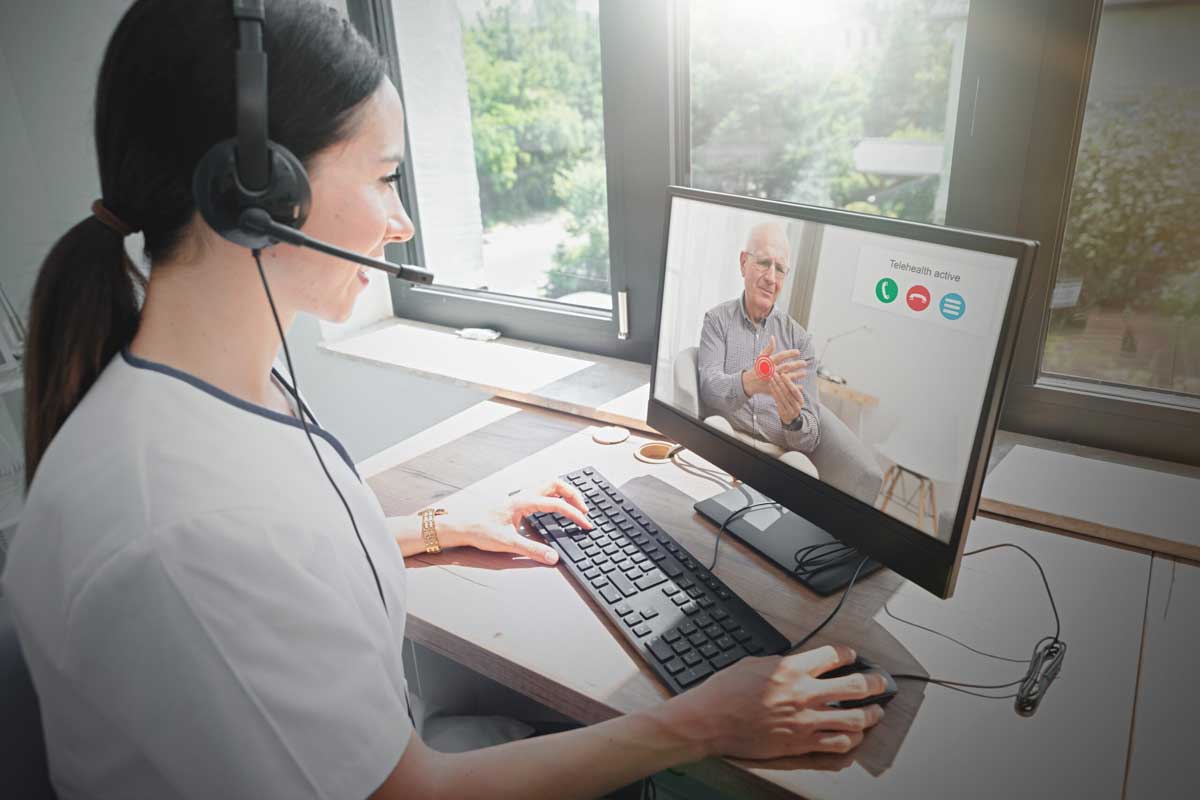For years, widespread telehealth adoption was stunted because of strict rules about how doctors could bill. As we all know, the pandemic completely launched these services into the spotlight, as doctors and patients needed efficient ways to stay connect while being physically apart. At the height of the pandemic, officials added 140 telehealth services to the list of what Medicare would pay for during the pandemic, including emergency visits, eye exams, speech and hearing therapy and nursing home care. After an initial telehealth spike to more than 32 percent of office and outpatient visits in April 2020, national use levels now range from 13 to 17 percent across all specialties. But don’t let the drop-off fool you into thinking telehealth is just a passing fad. The current utilization rate reflects more than two-thirds of what experts anticipated as visits that could be virtualized. In a nationwide poll last year, 8 in 10 Americans who had used telehealth said they “liked it” or “loved it.” Nearly the same share said they were likely to continue using it after the pandemic, according to the survey by the Harris Poll.
So, what about patient and physician cost savings?
A study from the American Journal of Emergency Medicine shows that remote care saved an average of $19-$121 per patient through an online consultation compared to traditional doctor visits. Virtual visits can improve patient engagement with check-ins, medication monitoring, and chronic condition management. Many physicians have noted a major decline in patients missing appointments since the adoption of telehealth visits, and a higher patient retention rate within your practice means a more steady revenue stream. Plus, since telehealth hours can be more flexible that traditional in-office visits, people will be more inclined to find a time that works with their primary physician rather than scheduling an appointment with someone new, or making an unnecessary emergency room visit. After all, any medical visit your patients make outside of your practice is lost revenue that you could be earning. Telehealth brings access to millions of new patients so they can get the proper care they need. New patients for your staff members to care for generates more revenue, and creates an overall healthier society.
Will workflow improve?
For many healthcare systems, telemedicine software means digitizing the workflow. We can actually see your staff members jumping for joy when they consider the reduction in physical paperwork and lost medical records. Speaking of saving money and increasing efficiency, providers can also maximize their workflow by incorporating telehealth software into waiting room options, enabling more accurate, less time-intensive billing practices. In a recent USA Today interview, former senior medical official at health insurance giant Anthem, Dr. Hoangmai Pham, believes there is a lot of opportunity for healthcare providers. Pham noted insurers could reward physicians and hospitals that take greater responsibility for their patients’ overall health with higher rates for telehealth.
What does the future hold for telehealth?
Some regulatory changes that enabled telehealth to grow have been made permanent, for example, the Centers for Medicare & Medicaid Services’ expansion of reimbursable telehealth codes for the 2021 physician fee schedule. However, the fate of other services that may lose their waiver status when the public health emergency ends remains unknown. What we know for sure is that virtual healthcare models are evolving and expanding to a range of services, integrating telehealth with other virtual health solutions, and adding hybrid virtual and in-person care models. The reality is telehealth and virtual medical care is likely to explode in the coming years. The annual global telehealth market is expected to top $300 billion by 2026, up nearly fivefold from 2019, according to research company PitchBook. These new approaches are creating the potential to improve patient convenience, access, health outcomes, and affordability.
Sources: McKinsey, American Journal of Emergency Medicine, USA Today, FS Health, Physicians on Fire










